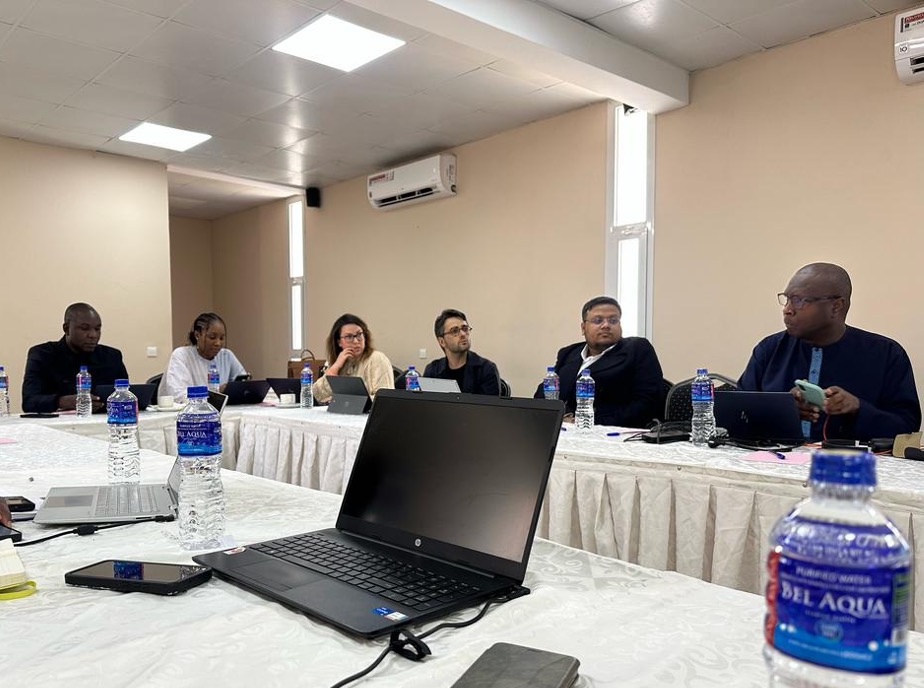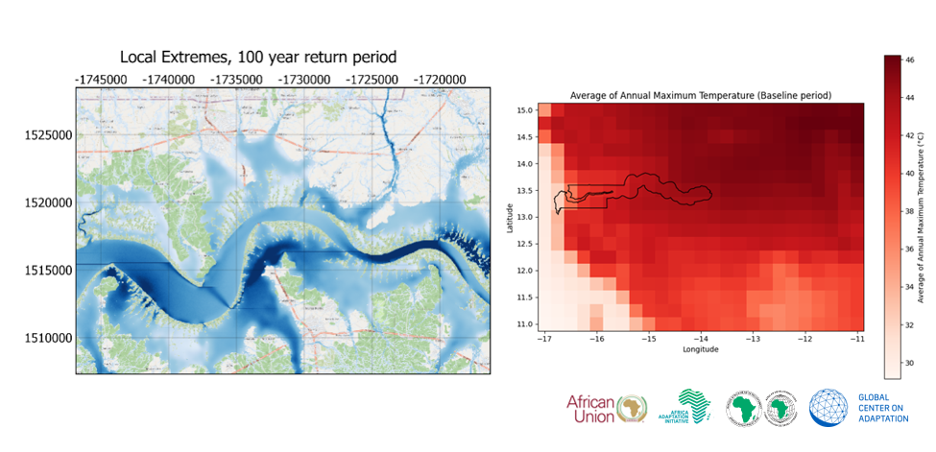Building Climate Resilience: GCA and AfDB Lead Multi-Stakeholder Workshop on the Senegambia Bridge
T he Global Center on Adaptation (GCA) and the African Development Bank (AfDB), under the Africa Adaptation Acceleration Program (AAAP) and in collaboration with Africa50, convened a multi-stakeholder workshop on February 26, 2025, to address climate risks and fortify the resilience of the Senegambia Bridge. This critical infrastructure, inaugurated in 2019, serves as a vital economic artery linking the northern and southern regions of both The Gambia and Senegal and plays a pivotal role in regional trade along the Dakar-Lagos corridor.
Understanding Climate Risks to the Senegambia Bridge
As climate change intensifies, extreme temperatures, pluvial flooding, and river flooding pose significant threats to the integrity of the Senegambia Bridge. Climate projections indicate a temperature increase of 2.5 to 6°C in the region by the end of the century, which could accelerate rutting on road surfaces, especially under heavy traffic loads. While flood modeling suggests the bridge itself is not at immediate risk of inundation, its feeder roads remain highly vulnerable, potentially disrupting transport, commerce, and daily life for thousands.


Socio-Economic Consequences of Climate Disruptions
Infrastructure damage extends beyond the physical realm, affecting livelihoods and essential services. The bridge is the sole transport link across the river, and any disruption would force travelers to take a 150-km detour. For the approximately 15,000 residents of Soma (south of the bridge), such disruptions could mean losing access to critical healthcare at Farafenni General Hospital, especially during peak malaria and malnutrition seasons.
Similarly, the bustling Farafenni marketplace and its weekly “Lumo” market depend on the bridge for trade, with any downtime jeopardizing the income of small business owners and limiting access to essential goods for the surrounding communities.
Solutions for a Climate-Resilient Future
During the workshop, stakeholders explored a suite of adaptation strategies aimed at safeguarding the long-term sustainability of the Senegambia Bridge. Key solutions discussed included enhanced engineering designs, such as polymer-modified binder or reflective pavement coatings, to mitigate extreme heat damage; improved drainage systems to ensure feeder roads remain operational during heavy rainfall; nature-based solutions, including active vegetation management and bio-engineered slopes, to stabilize surrounding landscapes; and the use of pavement blocks in swampy areas to reinforce road surfaces vulnerable to water damage.
Advancing Climate-Resilient Infrastructure
The multi-stakeholder workshop marked an important step in fostering climate resilience for critical infrastructure in The Gambia. By engaging government officials, engineers, asset operators, and financial institutions, GCA and AfDB are shaping an integrated approach that prioritizes both infrastructure durability and community well-being.
As climate challenges intensify, proactive adaptation strategies are no longer optional but essential. The Senegambia Bridge serves as a model for future resilience-building efforts, ensuring that vital infrastructure can withstand the climate realities of tomorrow while continuing to support economic growth and social connectivity across West Africa.
The multi-stakeholder workshop on the Senegambia Bridge represents a significant step forward in building climate-resilient infrastructure in Gambia. By bringing together viewpoints from diverse stakeholders, and prioritizing both infrastructure and community resilience, the GCA and AfDB are paving the way for a climate resilient and sustainable future for the region.

Robert M. Ochieng, PhD
Senior Climate Change and Green Growth Officer
African Development Bank

Tanim Istiaque
Senior Program Officer
Global Center on Adaptation
The ideas presented in this article aim to inspire adaptation action – they are the views of the author and do not necessarily reflect those of the Global Center on Adaptation.